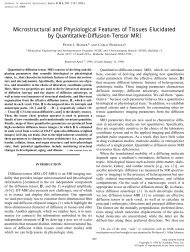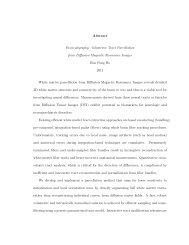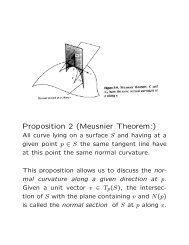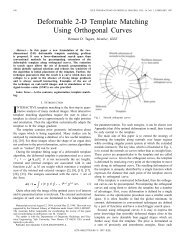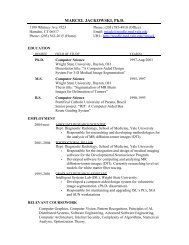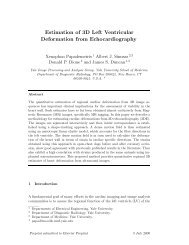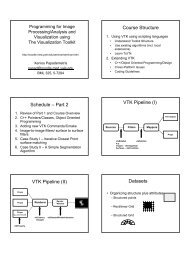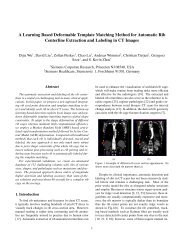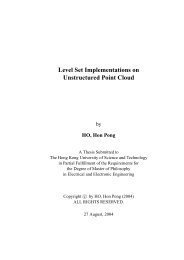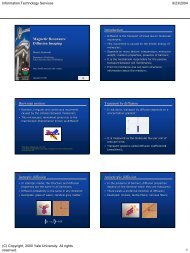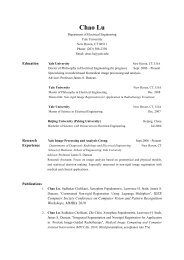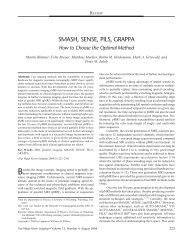Pulsed-field gradient nuclear magnetic resonance as a tool for ...
Pulsed-field gradient nuclear magnetic resonance as a tool for ...
Pulsed-field gradient nuclear magnetic resonance as a tool for ...
Create successful ePaper yourself
Turn your PDF publications into a flip-book with our unique Google optimized e-Paper software.
330<br />
PRICE<br />
into another Ž 123, 124 . . Exact solutions to Eq.<br />
119 are known only <strong>for</strong> some very simple c<strong>as</strong>es<br />
e.g., Refs. Ž 41, 124, 125. and generally, Eq. 119 must be evaluated numerically Ž 122, 124 . .<br />
CONCLUDING REMARKS<br />
<strong>Pulsed</strong>-<strong>field</strong> <strong>gradient</strong> experiments provide a<br />
straight<strong>for</strong>ward means of obtaining in<strong>for</strong>mation<br />
on the translational motion of <strong>nuclear</strong> spins.<br />
However, the interpretation of the data is complicated<br />
by the effects of restricting geometries and<br />
the mathematical modeling required to account<br />
<strong>for</strong> this becomes nontrivial <strong>for</strong> anything but the<br />
simplest of geometries. Generally, we have to<br />
resort to numerical methods andor approximations<br />
to model diffusion within restricted geometries,<br />
and the type of approximation that we<br />
choose should be consistent with our experimen-<br />
tal conditions. For example, to use the SGP approximation<br />
we must ensure that the condition<br />
holds.<br />
In the present article we have presented the<br />
underlying concepts of how PFGs may be used to<br />
me<strong>as</strong>ure diffusion. The mathematical modeling<br />
required to extract in<strong>for</strong>mation from the attenuation<br />
of the echo signal on the diffusion process<br />
and structural in<strong>for</strong>mation in restricting geometries<br />
w<strong>as</strong> presented in some detail, and both<br />
isotropic and anisotropic systems were considered.<br />
However, the experimental <strong>as</strong>pects and<br />
complications were largely ignored. Further, we<br />
presented only simple examples of restricting geometries<br />
and have barely mentioned any of the<br />
many applications that PFG NMR can be applied<br />
to such <strong>as</strong> me<strong>as</strong>uring polymer dynamics, obtaining<br />
diffusion and structural in<strong>for</strong>mation in porous<br />
media with more complicated restricted geometries<br />
and me<strong>as</strong>uring exchange.<br />
<br />
Figure 12 Example of an effective diffusion ellipsoid calculated using Eq. 116 . The<br />
parameters used in the simulation were 20 ms, D 0.6 10 9 m 2 s 1 , D 1.2 <br />
xx yy<br />
10 9 m 2 s 1 , D 1.5 10 9 m 2 s 1 . The extremely anisotropic diffusion parameters were<br />
zz<br />
chosen to allow e<strong>as</strong>y visualization of the ellipsoidal shape.



